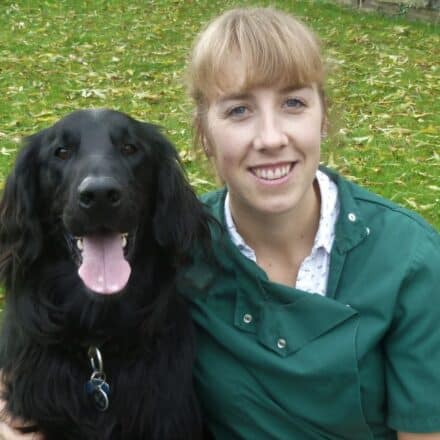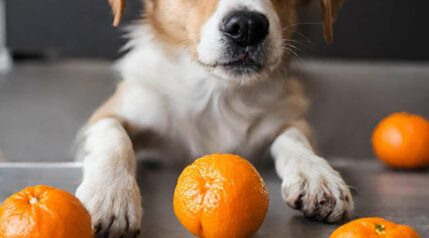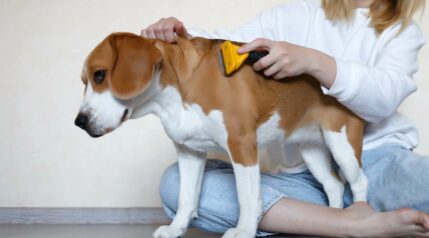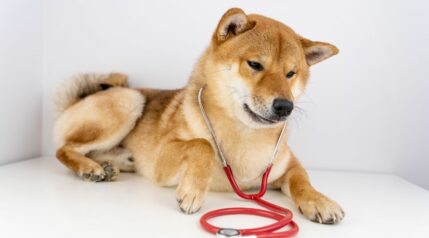Most of us indulge in a slice of toast, a dinner roll, or a sandwich regularly, but is it safe for dogs to eat bread? You might well have wondered what the right answer is when your dog is begging you for scraps yet again.
There are some instances where bread can be dangerous to dogs. This is usually because of additional ingredients.
Let’s explore whether bread is safe for dogs to try and any potential risks you need to be aware of.
Is Bread Safe For Dogs?
Most normal baked white and wheat bread are unlikely to cause serious issues if eaten in small amounts. Little bits of plain bread, baguettes, and rolls are all fine for most dogs to try if given as an occasional treat. Bread is not toxic to dogs and will be unlikely to cause any digestive upset if given sparingly. If your dog has been diagnosed with any specific food allergies, then obviously steer clear. Otherwise, most dogs can tolerate baked goods without a problem.
Is Bread Good For Dogs?
Just as in people, bread isn’t exactly considered a healthy dietary choice. Any potential nutritional benefits are outweighed by the excess amount of starchy carbohydrates and calories the bread provides. Many processed baked goods are made with flour that has been fortified with vitamins, such as folic acid in order to help stop certain nutritional deficiencies in people.
If your dog is on a good-quality complete commercial dog food, then he should be getting all of the nutrients he needs. Giving other food sources is only likely to add extra calories into his diet with minimal other benefits.
An occasional treat is unlikely to cause too much damage, but over time slices of bread here and there on top of his regular diet are just going to end up on his waistline.
When Is Bread Bad For Dogs?

Moldy Bread
If the bread is moldy, then it should be avoided. Moldy food like bread, nuts, or dairy products could contain harmful mycotoxins, which are poisonous. There are several different types of mycotoxin, but the most common are known as tremorgenic mycotoxins because they cause tremoring or seizures in affected animals.
So if your dog raids the bin and eats a moldy loaf or eats uneaten bread scraps that had been left out for the birds, he could show the following signs of toxicity:
- Vomiting
- Diarrhea
- Tremors
- Fever
- Seizures
- Panting
- Restlessness or disorientation
Dogs that have mycotoxin poisoning can be quite unwell and require urgent veterinary treatment.
Bread Dough
If a dog consumes uncooked bread dough, this could cause serious problems. The raw dough will expand in your dog’s warm stomach leading to bloating and abdominal discomfort. The dough can also ferment, releasing harmful ethanol. This will become absorbed into your dog’s bloodstream leading to symptoms of ethanol poisoning like weakness, lethargy, and collapse.
Added Ingredients
Some bread, especially high-end or artisan products, can contain additional ingredients. Many of these ingredients can actually be toxic to our pets. Let’s look at each of these.
Onions
Some bread might contain onions to give them extra flavor. Cheese and onions are a common flavor combination, or you might find onions found decorating Mediterranean bread like focaccia.
Onions in large quantities can cause toxicity in dogs. They are part of a group of plants known as allium species which can cause oxidative damage, affecting red blood cells and creating a serious condition in dogs called hemolytic anemia. Symptoms may not be seen right away, but dogs can go on to develop serious illnesses over time. The red blood cells in affected animals become fragile and burst, meaning your dog struggles with the delivery of oxygen around their body.
Garlic
Garlic, like onions, is a member of the allium family. This means garlic also causes oxidative damage to red blood cells, meaning they break more easily, leading to hemolytic anemia. This anemia can cause pale gums, a fast heart rate, weakness, and collapse. Garlic bread of any kind should, therefore not be fed to dogs, especially not in large quantities.
Xylitol
Some bread, especially diabetic or ‘diet’ types, can contain an artificial sweetener called xylitol which is toxic to dogs. (The same plant-derived substance as xylitol is also called “birch sugar” or “birch sap” in ingredient listings.) When dogs eat even small quantities of this, it can cause them to release an inappropriate amount of insulin, causing a rapid drop in blood sugar. If left untreated, this hypoglycemia can cause seizures and even death. Xylitol can also be found in other products like sugar-free gum, low-sugar sweets, diabetic chocolate, and sugar-free peanut butter.
Raisins
Many fruit loaves and pastries can contain raisins which have the potential to be extremely toxic to dogs. The exact mechanism of toxicity is unknown, but in some dogs, raisins (and also grapes) can cause kidney failure. Immediate treatment from a veterinarian is advised if your dog eats raisin bread or raisins, even if they seem okay. Treatment is usually aimed at decontamination (making your dog vomit up the raisins if possible or stomach flushing), followed by intravenous fluid therapy to try and protect the kidneys.
Chocolate
Some sweet loaves like banana bread, brioche, or pastries can contain chocolate. Dogs can’t metabolize the theobromine contained in chocolate, so it can potentially cause liver failure if eaten in large enough quantities. Smaller dogs are more susceptible to the effects of chocolate, and dark chocolates are particularly dangerous. Online calculators are available to check whether your dog has had a toxic dose, but you should always contact your veterinarian if your dog has eaten chocolate.
Nuts
Macadamia nuts are toxic to dogs and can cause symptoms such as tremoring, hindlimb weakness, and vomiting, so bread that contains nuts should be avoided – just in case.
What Should I Do If My Dog Eats Bread?

If your dog has raided the cupboards or your grocery bag and gotten a hold of a loaf of bread, here’s what to do:
- Stop your dog from eating any more bread – Try and remove your dog from the area to stop them from eating any more bread or packaging.
- Check your dog – Are they okay, or are they showing any signs of being sick? Is there any bloat, vomiting, or diarrhea?
- Gather any evidence – Try and work out what type of bread was eaten. Look for the wrapper or any leftover bread to try and see what type it was and what ingredients it might contain.
- Call your veterinarian for advice – If you suspect your dog has eaten bread containing potential toxins, such as raisins, xylitol, or onions, then call your veterinarian immediately. You will also need to call if they have eaten a very large quantity of bread or if you suspect the bread could have been moldy.
- Follow your veterinarian’s advice – If they would like you to bring your dog down to the clinic, then make sure you do so immediately.
When Should I Call My Vet If My Dog Has Eaten Bread?
You must call your vet if your dog has eaten a very large quantity of bread in one sitting, as this could lead to bloating, constipation, or even a physical obstruction in their gastrointestinal tract.
If your veterinarian is concerned about the volume of bread your dog has eaten or if they have eaten any of our previously listed toxic ingredients, then they will advise you to bring your dog into the clinic for an examination. Your vet will look at your dog’s overall demeanor and assess them for any signs of abdominal discomfort or bloating.
The vet might suggest medication to induce vomiting so that they bring up most of the bread and stop any further digestion, particularly if there are toxicity concerns.
In some cases, it may be necessary to run additional diagnostics, such as blood tests, especially if your dog has eaten bread containing potentially toxic ingredients. Similarly, if your pet is poorly and in need of supportive treatment, they might recommend that he stays in the clinic for monitoring.
If your dog has consumed any packaging that the bread was in, then there could be concerns about it causing a physical obstruction, so further diagnostics may be required, such as x-rays or ultrasounds.
Frequently Asked Questions
Can dogs eat bread? Is it safe?
Small amounts of plain whole wheat or white bread are fine for most dogs to have as an occasional treat. Just be careful about bread containing other ingredients, as some of these can be toxic. Chocolate, raisins, onions, xylitol, and certain nuts are dangerous, as is moldy bread.
Can dogs eat raisin bread?
No, dogs must never eat raisin bread. Raisins (as well as grapes) can be toxic to dogs. The exact mechanism of toxicity is unknown, but in some dogs, it can cause kidney failure.
What happens if a dog eats uncooked dough?
A small amount of uncooked dough is unlikely to cause any problems. If your dog eats a large amount, this could cause problems like bloating, abdominal pain, and even ethanol toxicity as the yeast in the dough expands and ferments.
Final Thoughts
In conclusion, can my dog eat bread? If it’s just the odd tiny piece of plain bread, then this shouldn’t cause a problem. However, if your dog is eating bread regularly, this could lead to weight gain and nutritional deficiencies if he starts preferring this over his normal dog food. Some bread can be toxic to dogs due to additional ingredients like raisins, onions, and chocolate. If you have any concerns about your pet, then make sure you give your veterinarian a call.





